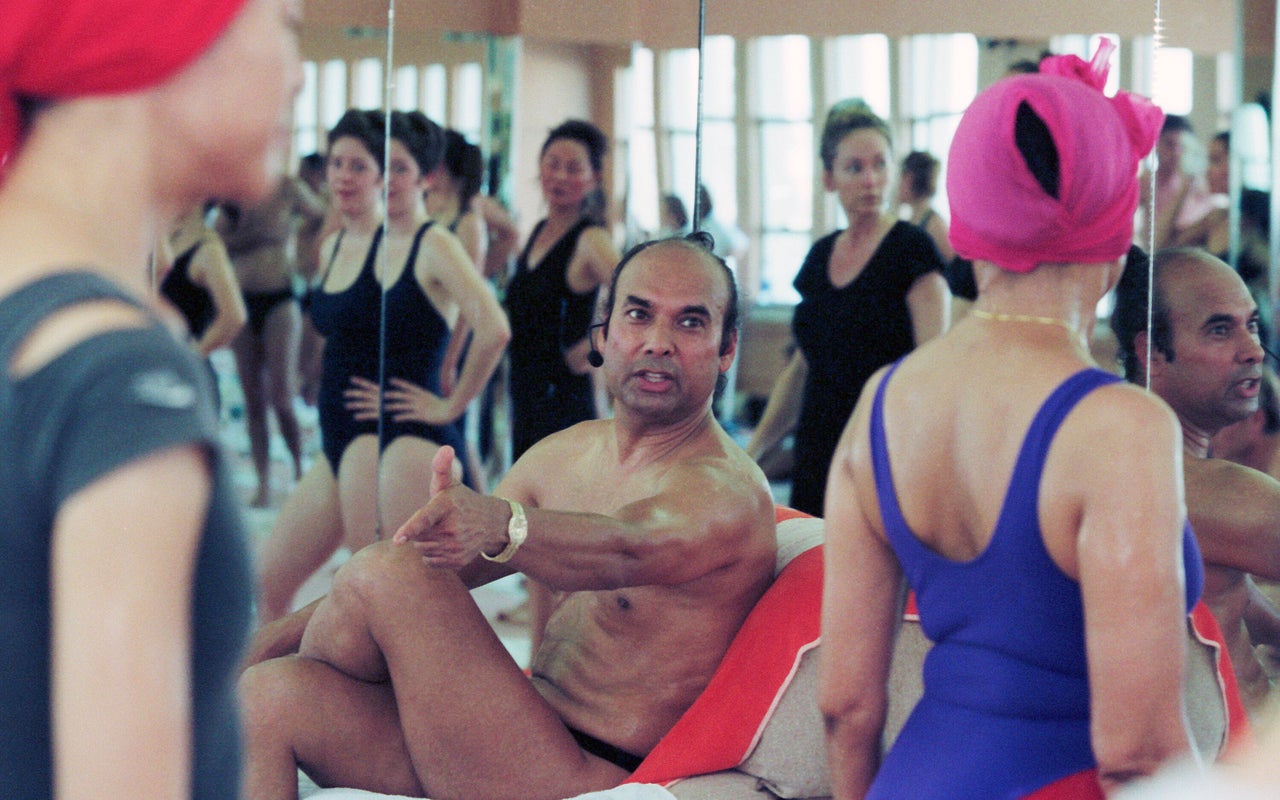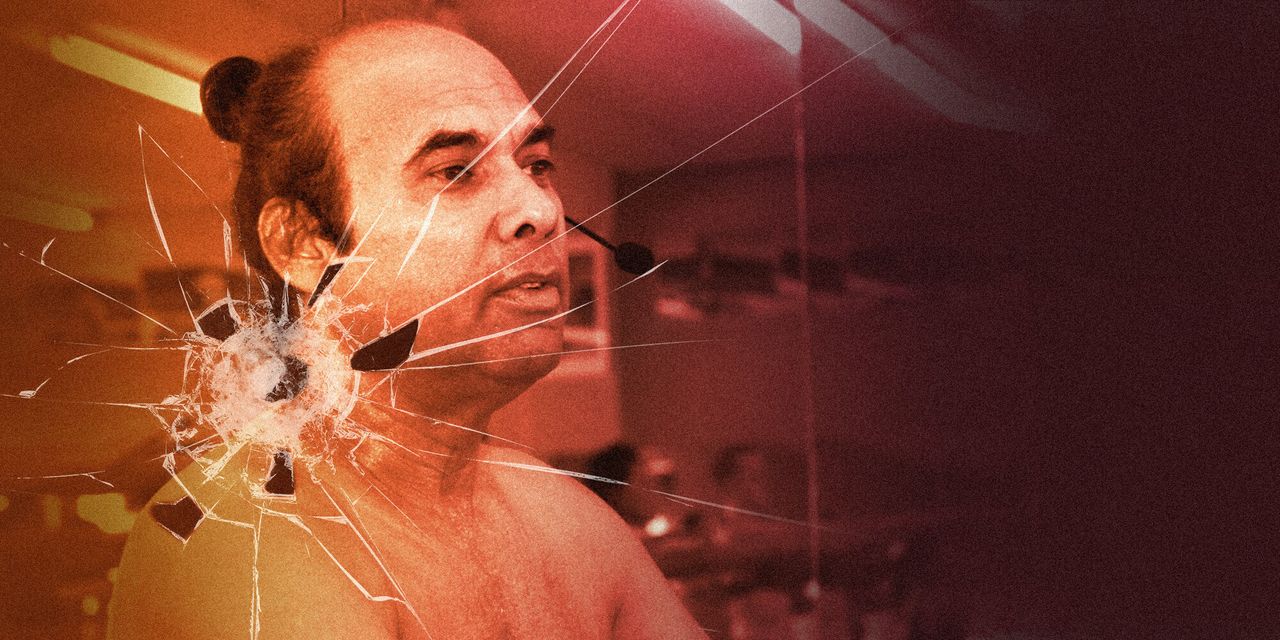In the southwestern Spanish town of Murcia, some 60 yogis spent nine weeks last spring in sweltering heat learning the 26 postures and 2 breathing practices of Bikram yoga, so that they might go home and teach it. The guru himself sat onstage, broadcasting instructions with his microphone headset. Bikram Choudhury, often wearing nothing except a black Speedo and a gold Rolex, is notoriously brutal at his teacher trainings, but his devoted followers embrace and value his methods ― so much so that they all paid between $12,500 and $16,600 to be there.
This fall, dozens more will pay the same amount for a teacher training in Acapulco, Mexico. Choudhury and his students ― the majority of whom are women ― will spend nine weeks at a Sheraton resort on Mexico’s Pacific coast, equipped with an 18-hole golf course, pools, bars, restaurants and “an outstanding wellness area,” according to the program description.
Acapulco is a convenient place for Choudhury ― he decamped there following several lawsuits, an arrest warrant and allegations of rape and harassment against him. This raises the question of why so many people worldwide continue to give him their money. For many, it appears to still be the highlight of their yoga careers. For others, those nine weeks with Bikram Choudhury were the most horrific experiences of their lives.
“It’s bizarre to me that people still go to these trainings.”
- Jessamyn Stanley, yoga instructor
Jill Lawler, a former student of Choudhury’s from a 2012 training, filed a civil suit against him for rape and harassment in July after her first complaint in 2016 was held up in Choudhury’s company’s bankruptcy lawsuit. Lawler and her legal team are going straight for the jugular in a civil suit, seeking punitive damages from Choudhury himself.
“Teacher Training was intense and demanding,” the lawsuit says. “Unbeknownst to [Lawler], Bikram Choudhury referred to them as ‘one big brainwashing session.’”
While some in the yoga community ― specifically the Bikram yoga community ― have taken lengths to distance their practices from the man himself, others have ignored the allegations altogether, or shrugged them off and given him thousands of dollars. In fact, the majority of his students are women, and the bulk of his wealth has come from them, despite his alleged predation.
“It’s bizarre to me that people still go to these trainings. I find it very hard to understand how someone could look [at the allegations of rape] and have questions about what happened,” said Jessamyn Stanley, a yoga instructor whose presence in the industry has inspired more diverse bodies to pick up the practice. “We as a community need to recover from this and look at this.”
The Money That Flows To The Guru
Choudhury developed what he has since called his own practice of doing yoga in the late 1960s ― the now-notorious 26 postures and two breathing practices that must be performed in a carpeted, 105-degree room. He brought it to San Francisco’s North Beach neighborhood in 1973, and in the decades since, America experienced what Stanley referred to as “the Bikram craze” ― a global franchise led by teachers who had to be trained by Choudhury himself to obtain certification. The cost of this recertification is between $750 and $1,200, and it must be repeated every three years. The locations and trainings became increasingly lavish in the 2000s as celebrities and public figures began to flock to his studios. At the height of the Bikram craze, there were 650 studios in America alone, and as the franchise expanded, so did Choudhury’s wallet.

Initially, Choudhury didn’t franchise his studios ― he just controlled every aspect of their development with specific contracts that studio owners had to agree to. Certified instructors are required to teach “The Dialogue,” a word-for-word replica of Choudhury teaching a class. Later, Choudhury began to franchise the studios, and per a 2015 report, the cost of opening a Bikram studio is $10,000. There are hundreds of studios in the U.S. alone, and in Europe, Asia and Australia, too. Beyond that start-up fee, Bikram is also owed a percentage of sales, a 5% gross revenues royalty fee, and a 2% gross revenue advertising fund fee per studio. (HuffPost reached out to the Bikram team several times for comment and an update on the franchise fees and received no response.)
It was at the height of this craze that Choudhury allegedly began taking advantage of his more vulnerable students, many of whom seek out the practice due to mental health issues or physical injuries.
Lawler was 18 years old when she spent her college tuition money on a 2012 Bikram yoga teacher training in Las Vegas. She wrote to Choudhury, asking if she could attend despite being three years under the required age, and she was quickly accepted, according to her lawsuit.
“At the time, Jill was proud to be the youngest student at [teacher training], not realizing that her youth and indebtedness to [Choudhury] made her vulnerable and of interest,” the lawsuit reads.
The next several months would include humiliation and degradation at the hands of her guru, the lawsuit alleges, starting with requests for hourslong foot and body massages and culminating in being raped in his hotel room more than once. Because of her financial situation, of which Choudhury had been aware since she reached out to him, Lawler could not simply pack her bags and fly back home.
The lawsuit alleges that Choudhury “has a practice of singling out individual students, both for negative and positive attention. In particular, he singles out female students, compliments and insults them, and requires them to brush his hair or massage him. [He] also manipulates his students, particularly vulnerable women in whom he has sexual interest.”
“He was my guru. I really loved him.”
- Jill Lawler, former student of Bikram Choudhury
In 2016, a Los Angeles jury awarded Choudhury’s former legal adviser, Minakshi Jafa-Bodden, $6.4 million for sexual harassment. A 2016 HBO documentary hosted by journalist Andrea Kremer explored allegations of rape from Lawler and two other women. In the documentary, Kremer visits Choudhury at his Beverly Hills home, where he tells her that his accusers, his former students, are “trash.”
“Why would I have to harass women? People spend 1 million dollars for a drop of my sperm,” he said.
In some ways, he’s not wrong.
“He was my guru,” Lawler said. “I really, really loved him.”
In the midst of several legal battles, including his wife’s filing for divorce for “irreconcilable differences,” Choudhury’s company, Bikram Yoga Inc., filed for bankruptcy in 2017.
But none of these allegations and legal challenges have fully deplatformed him. He has dodged criminal charges and made a comfortable home for himself in a resort town just out of reach from prosecution. In two months, women from all over the world will pay five figures for the opportunity to rub his feet until their fingers are raw.
Separating The Practice From The Guru
In my first Bikram yoga class, I nearly threw up twice: first from the smell of the carpet and again because I had underestimated how very dehydrating the practice can be. (I nearly threw up a third time reading Lawler’s July lawsuit against the predatory guru.) The sweat is no joke, nor is the actual work of the practice. If you must rest, you’re meant to do so staying upright. Drinking water during practice is discouraged except when the instructor permits it. It’s not uncommon for students to get up and walk out of the class for air, or because they hate it.

For some, the practice is invigorating and healing, and for others, it’s 90 minutes of trying not to vomit or pass out. Often, it is both. Many yogis are attracted to it for its consistency ― no matter what studio you’re in, because of The Dialogue, you will do the same routine. Though the practice wasn’t for me, there is no shortage of praise for what Bikram yoga has done for people with injuries or respiratory, mental or spiritual health issues, and that praise is valid.
But ignoring the dark side of the guru behind it is irresponsible.
Beyond the many accusations of rape and harassment, Choudhury has claimed that Bikram yoga can cure AIDS and Parkinson’s disease. When a Black woman called him out for making homophobic statements, he told his assistants to “get that Black bitch out of here” and called her “a cancer.” He has also said that “Blacks don’t get my yoga.”
Last year, in ESPN’s “30for30” podcast, reporter Julia Lowrie Henderson took a deep dive into Choudhury’s past and met with a relative of Choudhury’s guru, Kavya Dutta, who told her that the routine Choudhury has been trying to copyright all these years is actually a routine her family grew up practicing.
“It’s not his,” Dutta said. “I’m sorry to say that.”
Many studios have begun to change their affiliations with Choudhury, “de-branding” from the guru and referring to their classes as “hot yoga” or “Bikram-style” instead of just “Bikram yoga.” This, on top of his company’s bankruptcy and his many legal battles, has understandably hit Choudhury hardest, in his ego and in his bank account. Choudhury has long been aggressive about owning the practice ― in 2012, he filed an unsuccessful copyright lawsuit against Yoga to the People, a New York City studio run by a former student, for using his teaching style in his practice. Before that, he had for years been trying to copyright the poses, or asanas.
Nevertheless, the yoga community (marketed to and driven predominantly by women) continues to enjoy his practice ― much like the many cinephiles still drawn to the catalogs of Woody Allen or Kevin Spacey, or the die-hard fans who will defend Michael Jackson (reportedly a Bikram enthusiast) to their graves.
This speaks to the personality culture of yoga, on the one hand. “It’s celebrity culture on overdrive,” said Stanley. “It comes down to the internalized misogyny and rape culture that the American style yoga community has always been about.”
Stanley still practices Bikram, if not as often as she used to. “He has very little to do with the power of yoga itself. No one owns yoga,” she said.
But Choudhury, from an opulent hotel suite in Acapulco, continues to try.
